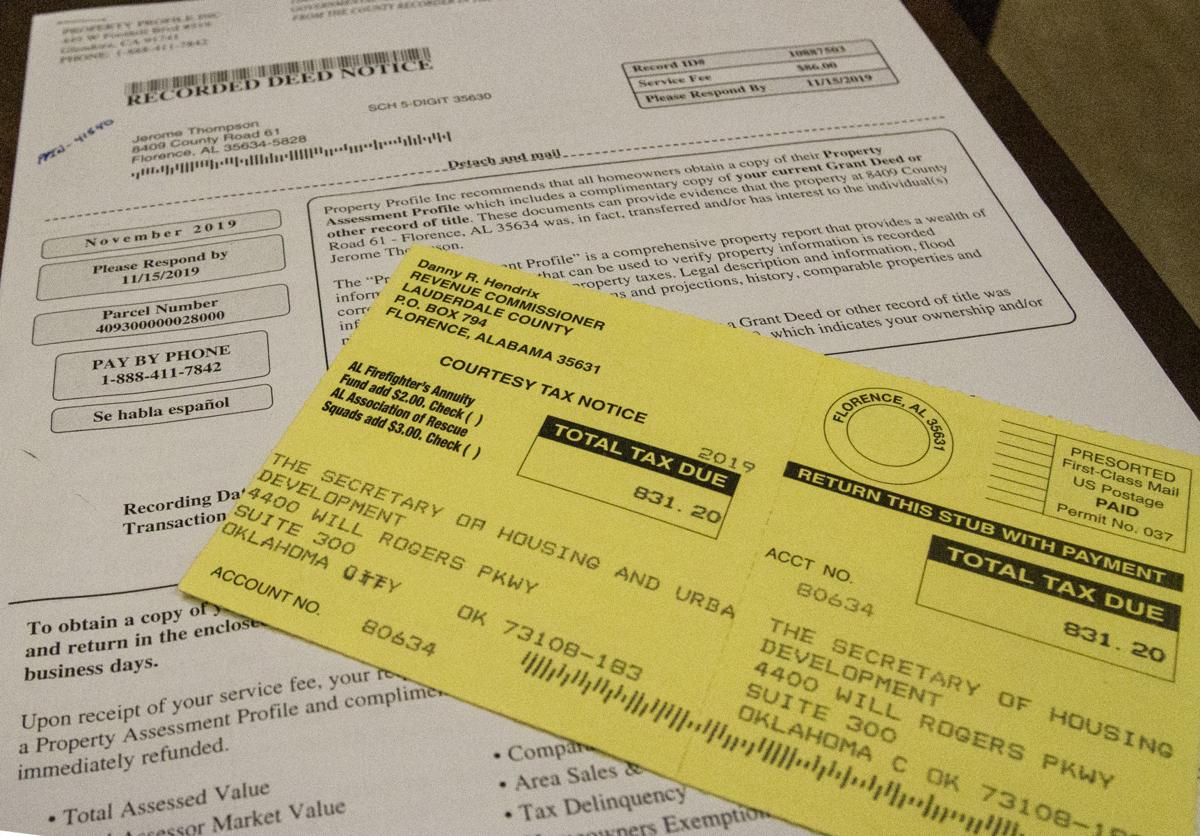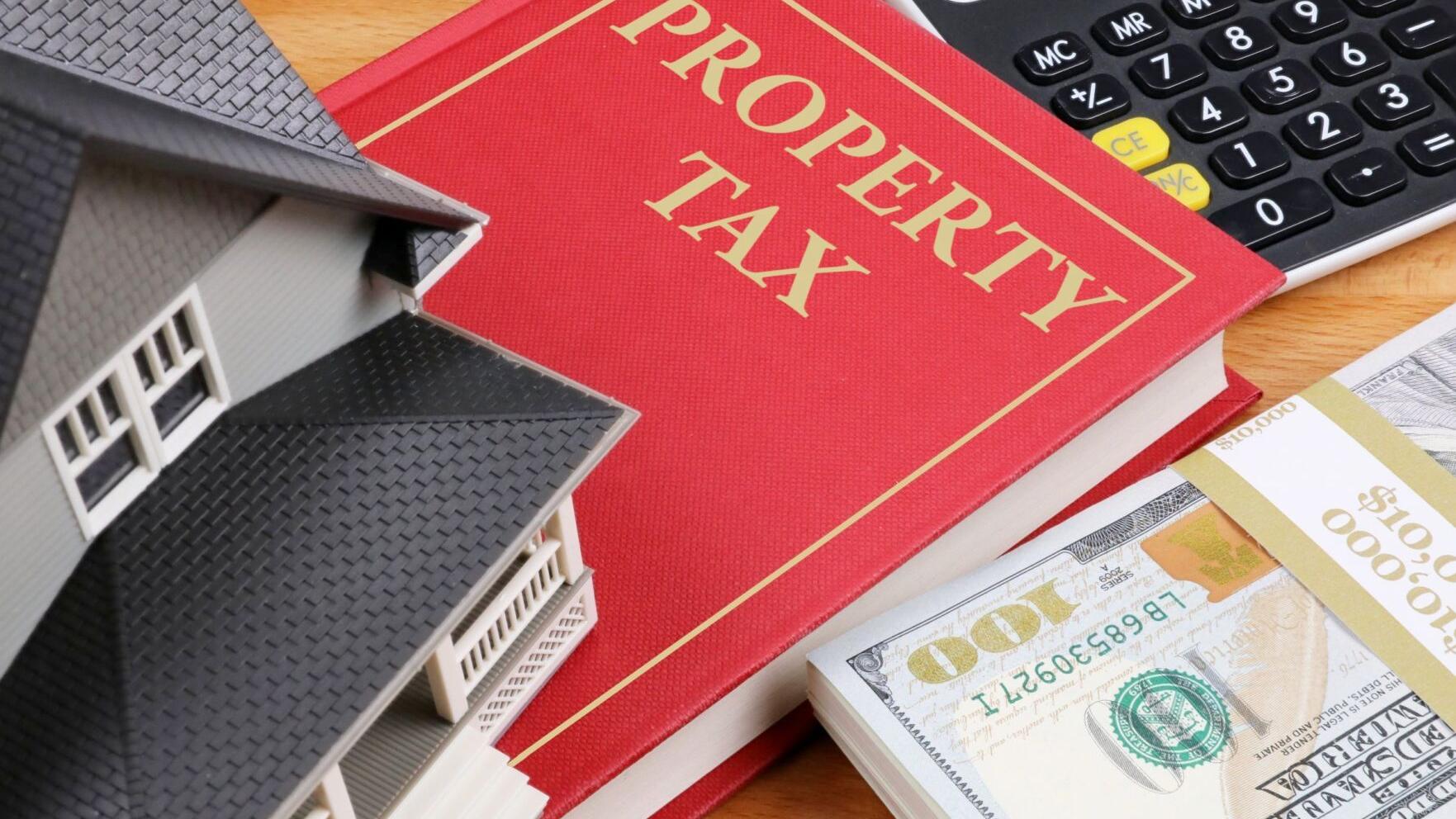Home>Home Maintenance>How Is Property Assessment Conducted In New Mexico?


Home Maintenance
How Is Property Assessment Conducted In New Mexico?
Modified: March 6, 2024
Learn how property assessment is conducted in New Mexico and get tips on home maintenance to maximize your property value.
(Many of the links in this article redirect to a specific reviewed product. Your purchase of these products through affiliate links helps to generate commission for Storables.com, at no extra cost. Learn more)
Introduction
Welcome to New Mexico, where property assessment plays a vital role in determining property values and subsequent property taxes. Whether you are a homeowner, a prospective buyer, or a real estate investor, understanding how property assessment is conducted in New Mexico is essential.
In this article, we will provide you with a comprehensive overview of property assessment in New Mexico. We will delve into the roles and responsibilities of assessors, explore the assessment process, discuss the factors considered in property assessment, and shed light on the appeals and dispute resolution process. Additionally, we will touch upon the topic of property taxation.
By the end of this article, you will have a solid understanding of how property assessment works in New Mexico and how it impacts property values and taxes. Let’s dive in!
Key Takeaways:
- Property assessment in New Mexico determines property values for taxes based on factors like location, size, condition, and market trends. Property owners can appeal assessments if they believe they are inaccurate.
- Property taxes in New Mexico are crucial for local revenue. Property owners must pay taxes based on assessed values and mill levies, with exemptions available to lower tax burdens for eligible individuals.
Overview of Property Assessment in New Mexico
In New Mexico, property assessment is a systematic process carried out by county assessors to determine the market value of real property for taxation purposes. The main goal of property assessment is to ensure that property taxes are fairly and accurately levied.
Property assessment in New Mexico is conducted on an annual basis. County assessors are responsible for assessing the value of all properties within their jurisdiction, including residential, commercial, and agricultural properties.
The assessed value of a property is based on its market value, which is the estimated price the property would sell for in an open and competitive market. Assessors use various methods and data sources to determine the market value, including market sales data, property inspections, and land and property characteristics.
It is important to note that property assessment in New Mexico is not intended to reflect the current market value of a property at the time of assessment. Instead, it is based on the market value as of January 1st of the assessment year. This means that changes in the real estate market after the assessment date may not be immediately reflected in the assessed value.
The assessed value of a property is then used to calculate property taxes. In New Mexico, property taxes are levied by multiple taxing authorities, including schools, cities, counties, and special districts. The property tax rate is determined by each taxing authority and is applied to the assessed value of the property to calculate the property tax amount.
It’s important to note that property assessment in New Mexico is governed by state laws and regulations, which provide guidelines and standards for assessors to follow. These laws ensure uniformity and fairness in the assessment process.
Now that we have covered the basics of property assessment in New Mexico, let’s take a closer look at the roles and responsibilities of assessors in the next section.
Roles and Responsibilities of Assessors
In New Mexico, assessors are public officials appointed or elected at the county level. They play a crucial role in the property assessment process, ensuring that assessments are conducted accurately, fairly, and in accordance with state laws.
The primary responsibilities of assessors include:
- Inspecting and assessing all real property within their jurisdiction
- Determining the market value of properties
- Maintaining accurate and up-to-date property records
- Applying appropriate valuation methods and techniques
- Ensuring compliance with state laws and guidelines
- Responding to taxpayer inquiries and providing information
- Reviewing and verifying property assessment appeals
Assessors carry out property inspections to gather information about the physical characteristics and condition of properties. This information is then used to determine the market value. Factors such as property size, location, improvements, and comparable sales in the area are taken into consideration during the assessment process.
To maintain the accuracy of property assessments, assessors may conduct reassessments periodically or in response to changes in property ownership, improvements, or market conditions. Reassessment ensures that property values are reflective of the current market value.
Assessors also have a responsibility to provide transparency in the assessment process. They must make property assessment records available to the public, allowing property owners to review their assessments and ensure accuracy.
In addition to their assessment duties, assessors may also play a role in educating taxpayers about property assessment and taxation. They may conduct informative workshops or provide resources to help property owners understand the assessment process and their rights as taxpayers.
If a property owner disagrees with the assessed value of their property, assessors are responsible for reviewing and verifying assessment appeals. Property owners have the right to challenge their assessments and provide evidence to support their claim. Assessors review the evidence and make a determination regarding the revised assessed value.
Now that we have explored the roles and responsibilities of assessors, let’s move on to understanding the assessment process in New Mexico.
The Assessment Process
The assessment process in New Mexico involves a series of steps that assessors follow to determine the market value of properties. Let’s take a closer look at each step:
- Property Identification: Assessors start by identifying and locating all real property within their jurisdiction. This includes residential, commercial, industrial, and agricultural properties.
- Property Inspection: Assessors conduct physical inspections of properties to gather data on their characteristics, such as size, condition, amenities, and any improvements made. This information is crucial in determining the market value.
- Data Collection: Assessors collect relevant data on properties, such as recent sales in the area, rental income, property tax records, and other market indicators. They may also gather information from property owners and real estate agents.
- Valuation Methods: Assessors use various valuation methods to estimate the market value of properties. These methods include the sales comparison approach, cost approach, and income approach. The choice of the valuation method depends on the type of property and available data.
- Market Analysis: Assessors analyze market trends, including changes in property values, supply and demand, and economic factors that may impact property values in their jurisdiction. This helps them make informed assessments.
- Assessment Calculation: Assessors calculate the assessed value of properties based on the market value and the assessment ratio set by the state. The assessment ratio represents the percentage of the market value that is used to calculate the assessed value.
- Assessment Notice: Once the assessments are completed, property owners are notified of their assessed values through an assessment notice. The notice includes information on the assessed value, the tax rate, and the deadline for filing an appeal.
It is important to note that property owners have the right to review their assessments and verify their accuracy. If they believe the assessed value is incorrect, they can file an appeal with the county assessor’s office.
Assessors are responsible for reviewing and verifying assessment appeals. They consider the evidence provided by the property owner and make a determination regarding the revised assessed value. If the property owner is not satisfied with the assessor’s decision, they can further appeal to the New Mexico State Board of Assessment and the courts.
Now that we have covered the assessment process, let’s explore the factors considered in property assessment in New Mexico.
Determining Property Values
In New Mexico, property values are determined through a comprehensive assessment process that takes into account various factors. These factors play a crucial role in assessing the market value of properties. Let’s dive deeper into the key considerations:
- Location: The location of a property is a significant factor in determining its value. Properties in desirable neighborhoods, close to amenities, schools, and transportation hubs tend to have higher values compared to those in less desirable locations.
- Size and Lot: The size of a property, including the square footage of the structure and the size of the lot, affects its value. Generally, larger properties with spacious living areas and ample outdoor space command higher prices.
- Condition: The condition of a property plays a crucial role in its value. Well-maintained properties with updated features and modern amenities tend to have higher values compared to properties in need of repairs or renovations.
- Comparable Sales: Assessors consider recent comparable sales in the area to assess the market value of a property. These sales provide insights into the prices at which similar properties have been sold, helping in estimating the value of the subject property.
- Income Potential: For commercial properties, assessors evaluate income potential by considering factors such as rental income, occupancy rates, and market demand. The potential income generated by the property affects its value.
- Improvements and Amenities: Assessors take into account any improvements made to the property, such as renovations, additions, or upgrades. Features like swimming pools, landscaping, and high-end finishes also contribute to the value.
- Economic Factors: Economic conditions, such as supply and demand, interest rates, and employment rates, can influence property values. Assessors analyze these factors to determine how they impact the local real estate market.
It is worth noting that assessors follow state guidelines and use standardized appraisal methods to ensure consistency and accuracy in property valuation. These methods include the sales comparison approach, cost approach, and income approach.
By considering these factors and using appropriate valuation methods, assessors aim to determine the market value of properties that aligns with the current real estate market in New Mexico.
Now that we have explored the factors considered in property assessment, let’s move on to discussing the appeals and dispute resolution process.
Property assessment in New Mexico is conducted by county assessors who determine the value of a property based on factors like location, size, and condition. It’s important to review your assessment to ensure accuracy and appeal if necessary.
Factors Considered in Property Assessment
When conducting property assessments in New Mexico, assessors take into account a variety of factors that influence the market value of a property. These factors help assessors determine a fair and accurate assessment that reflects the current real estate market. Let’s explore some of the key factors considered:
- Location: The location of a property is a primary factor in determining its value. Assessors consider factors such as proximity to amenities, schools, transportation, and desirable neighborhoods. Properties in prime locations often have higher market values.
- Size and Square Footage: The size of a property, including the square footage of the structure and the lot, is a crucial factor in property assessment. Generally, larger properties have higher assessed values, but it is also influenced by the market demand.
- Property Condition: Assessors evaluate the condition of the property to determine its value. Well-maintained properties with modern amenities and updated features tend to have higher values compared to properties in need of repairs or renovations.
- Improvements and Features: Assessors consider any improvements made to the property, such as renovations, additions, or upgrades. Features like swimming pools, landscaping, and high-end finishes can positively impact the assessed value of a property.
- Comparable Sales: Assessors analyze recent sales of similar properties in the area to assess the market value. They compare factors such as location, size, condition, and amenities to determine a fair value.
- Rental Income: In the case of income-producing properties, assessors consider the rental income potential. Factors such as rental rates, occupancy rates, and local rental market conditions play a role in the assessment process.
- Market Trends: Assessors analyze the current real estate market trends, including supply and demand, interest rates, and economic conditions. These factors can influence property values and are taken into consideration during the assessment process.
It’s important to note that while these factors are significant in property assessment, assessors adhere to appraisal guidelines and methodologies prescribed by the state to ensure consistency and fairness.
By considering these factors and utilizing appropriate valuation methods, assessors strive to determine the market value of properties that accurately reflect the current real estate market in New Mexico.
Now that we have discussed the factors considered in property assessment, let’s move on to understanding the appeals and dispute resolution process.
Appeals and Dispute Resolution
In New Mexico, property owners have the right to appeal their property assessments if they believe the assessed value is inaccurate or unfair. The appeals process provides a mechanism for property owners to present evidence and seek a review of their assessments. Let’s explore the appeals and dispute resolution process in more detail:
1. Filing an Appeal: Property owners must file an appeal with the county assessor’s office within a specified time frame, usually within 30 to 45 days of receiving their assessment notice. The appeal should include a detailed explanation of why the assessed value is contested.
2. Assessor Review: Upon receiving an appeal, the assessor’s office will review the evidence presented by the property owner. This may include recent comparable sales, property appraisals, or other documentation supporting the claim that the assessed value is incorrect.
3. Informal Conference: In some cases, the assessor’s office may offer an informal conference where the property owner can meet with an assessor to discuss the assessment and provide additional information. This is an opportunity for the property owner to present their case and potentially reach a resolution.
4. Assessor’s Decision: After reviewing the appeal and any additional evidence, the assessor will make a decision regarding the revised assessed value. The property owner will be notified of the decision in writing.
5. State Board of Assessment: If the property owner is not satisfied with the outcome of the appeal with the assessor’s office, they have the option to further appeal to the New Mexico State Board of Assessment. This independent board reviews the appeal and makes a determination.
6. Judicial Appeal: If the property owner is still dissatisfied with the decision made by the State Board of Assessment, they can file a judicial appeal with the district court. This involves presenting the case before a judge who will make a final ruling.
It’s important for property owners to note that appeals must be based on valid grounds, such as errors in property information, incorrect valuation methods, or significant discrepancies between the assessed value and comparable sales in the area.
Throughout the appeals and dispute resolution process, it is advisable for property owners to gather supporting documentation, consult with real estate professionals or appraisers, and ensure compliance with all relevant deadlines and requirements.
Now that we have covered the appeals and dispute resolution process, let’s move on to understanding property taxation in New Mexico.
Property Taxation in New Mexico
In New Mexico, property taxation is an important source of revenue for local governments, schools, and special districts. Property owners are responsible for paying property taxes based on the assessed value of their properties. Let’s explore property taxation in more detail:
1. Property Tax Rates: Property tax rates in New Mexico are set by various taxing authorities, including county governments, school districts, municipalities, and special districts. Each taxing authority determines its tax rate, which is applied to the assessed value of the property to calculate the property tax amount.
2. Mill Levy: In New Mexico, property taxes are often expressed in terms of a mill levy. A mill levy represents the tax rate per $1,000 of assessed value. For example, if a property has an assessed value of $100,000 and the mill levy is 30, the property tax would be $3,000 ($100,000/1,000 x 30).
3. Payment Schedule: Property taxes are typically paid in two installments in New Mexico. The first installment is due on November 10th, and the second installment is due on April 10th of the following year. However, the exact due dates may vary slightly depending on the county.
4. Property Tax Exemptions and Deductions: New Mexico offers certain exemptions and deductions that may lower the property tax burden for eligible property owners. These exemptions include the veteran’s exemption, senior citizen exemption, and the disabled veteran’s exemption, among others. Property owners should consult with their county assessor’s office to determine if they qualify for any exemptions or deductions.
5. Delinquency and Penalties: Property taxes that are not paid by the due dates are considered delinquent. Delinquent property taxes may accrue penalties and interest. In extreme cases of non-payment, the property may be subject to tax lien sales or foreclosure.
6. Property Tax Appeals: If property owners believe their property tax assessment is inaccurate, they have the right to appeal to the county assessor’s office. The appeals process allows property owners to present evidence and provide documentation to support their claim for a reduced assessed value and, subsequently, a lower property tax liability.
It’s important for property owners to stay informed about property tax obligations and any changes in tax rates or exemptions. They should keep track of payment due dates, review their assessment notices, and consult with the county assessor’s office if they have any questions or concerns.
Now that we have covered property taxation in New Mexico, let’s conclude our article.
Conclusion
Property assessment is a vital process in New Mexico that determines the market value of properties and subsequently, the property taxes that owners are required to pay. County assessors play a crucial role in conducting assessments, ensuring that they are fair, accurate, and in compliance with state laws.
Throughout the assessment process, assessors consider various factors, including location, size, condition, improvements, and market trends, to determine the market value of properties. Property owners have the right to review their assessments and file appeals if they believe the assessed value is incorrect or unfair. The appeals and dispute resolution process provides property owners with an opportunity to present evidence and seek a review of their assessments.
Property taxes in New Mexico are an important source of revenue for local governments, schools, and special districts. Property owners are responsible for paying property taxes based on the assessed value of their properties, which is multiplied by the applicable mill levy. There are also exemptions and deductions available that may lower the property tax burden for eligible property owners.
Understanding the property assessment and taxation process in New Mexico is essential for property owners, prospective buyers, and real estate investors. By having a solid understanding of how assessments are conducted, property values determined, and property taxes calculated, individuals can make informed decisions and ensure compliance with their tax obligations.
As property owners navigate the property assessment and taxation process, it is important to consult with the county assessor’s office and seek professional advice when needed. Staying informed about important dates, payment schedules, and any changes in tax rates or exemptions is crucial to avoid penalties and ensure a smooth experience.
We hope this article has provided you with valuable insights into property assessment, property values, and property taxation in New Mexico. It is our aim to empower property owners with knowledge and understanding to navigate the intricacies of the system successfully.
Remember, whether you’re a homeowner, a buyer, or a real estate investor, understanding property assessment and taxation is key to maintaining a sound financial footing and ensuring your property is valued fairly.
Frequently Asked Questions about How Is Property Assessment Conducted In New Mexico?
Was this page helpful?
At Storables.com, we guarantee accurate and reliable information. Our content, validated by Expert Board Contributors, is crafted following stringent Editorial Policies. We're committed to providing you with well-researched, expert-backed insights for all your informational needs.















0 thoughts on “How Is Property Assessment Conducted In New Mexico?”